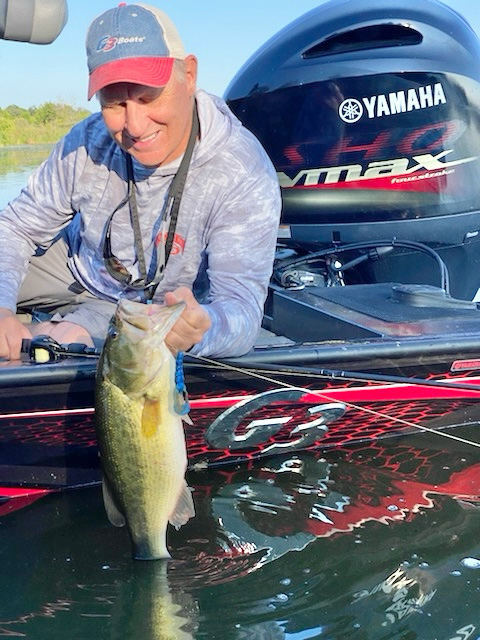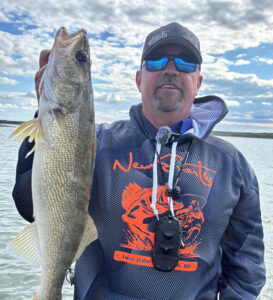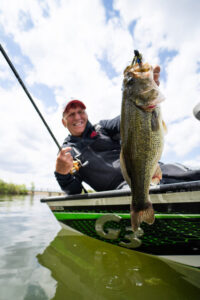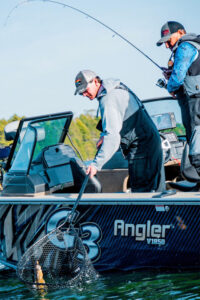By Mike Frisch and the Fishing the Midwest Team
One thing that I often see from professional anglers, guides, and good “weekend anglers” is the ability to read the current conditions, particularly if they have changed, and adapt and adjust their fishing locations and presentations in response to those changes.
A few examples from my personal fishing experiences this year served as good reminders for me and my fishing partners regarding the importance of adjusting and adapting to the conditions. Mid-summer saw us on a 5,000-acre Midwestern lake with a maximum depth of around 27 feet. In past summers, lots of walleyes ended up roaming the extensive and featureless basin the lake has. We have had good success on the lake trolling crankbaits, in particular small Salmo Hornets. This day we got on the water, set our lines to run maybe 2-3 feet off bottom, and attached OFF SHORE planer boards which allow us to spread our lines to cover more water and keep fish from spooking from the boat and our baits. We caught a couple small fish but noticed several bigger “marks” up 5- 10 feet from bottom. We quickly raised our lines to target the 8-10 foot zone from bottom and were rewarded with several bigger “over” walleyes, those over 20 inches in length.
Mid-August found me on a smaller lake with good weed growth and lots of largemouth bass. I had been targeting heavy weeds in about 8 to 10 foot and “dropping” big jigs and plastic craws to the fish. This method was putting a couple dozen fish a day in the boat, with several being 2 ½ to 4 pounders. We decided to do a TV shoot detailing this pattern. On “TV day,” however, three hours of fishing had yielded one of those nice largemouth and a few small fish. The one nice fish had come as I randomly pitched my jig to around 13 feet of water while approaching the shallower depths in one of my previously good areas. With that in mind, I decided to probe a bit deeper water and weeds than I had been fishing. What I found was green, living coontail weeds that were holding good bass. In an hour, we wrapped up the TV shoot with several catches!
Lastly, just days ago a partner and I were amped up to film a TV show featuring top-water frogs and big largemouth. We spent an hour fishing a couple very good spots that usually yield fish. With no bass in the boat, we pulled out deeper to try our back up plan which was casting crankbaits to weedlines and underwater points. Our first stop was a point where we have both caught numbers of bass in the past. My partner’s first cast with a Pro Model Series 3 crankbait, a traditional bass producer, yielded a 16 inch walleye. Our next two casts led to a double on comparable fish. The fish were aggressive, fought hard, and appeared to be numerous. We let our upcoming TV guests know what was happening and transitioned to a walleye segment for TV. We didn’t catch any big walleyes but ended up putting around 3 dozen fish up to around 19 inches in the boat. We got a very nice “casting crankbaits” segment that should be informative and enjoyable for TV viewers this winter. Plus, it was lots of fun for the anglers involved!
The more I fish, the more I learn, the more I realize that the “rules” in fishing seem to be ever changing. And, if we want to be successful on the water we need to change as those rules and fishing conditions change. The next time you are on the water and things don’t go as planned, consider the current fishing conditions and how you might adapt and adjust to salvage that day on the water.
As always, enjoy your time on the water and remember to include a youngster in your next outdoors adventure!
Mike Frisch hosts the popular Fishing the Midwest TV show on Sportsman Channel, World Fishing Network, and Bally Sports. Visit www.fishingthemidwest.com to see more.
PHOTO – Mike Frisch lands a bass that he caught after making some on the water adjustments.





